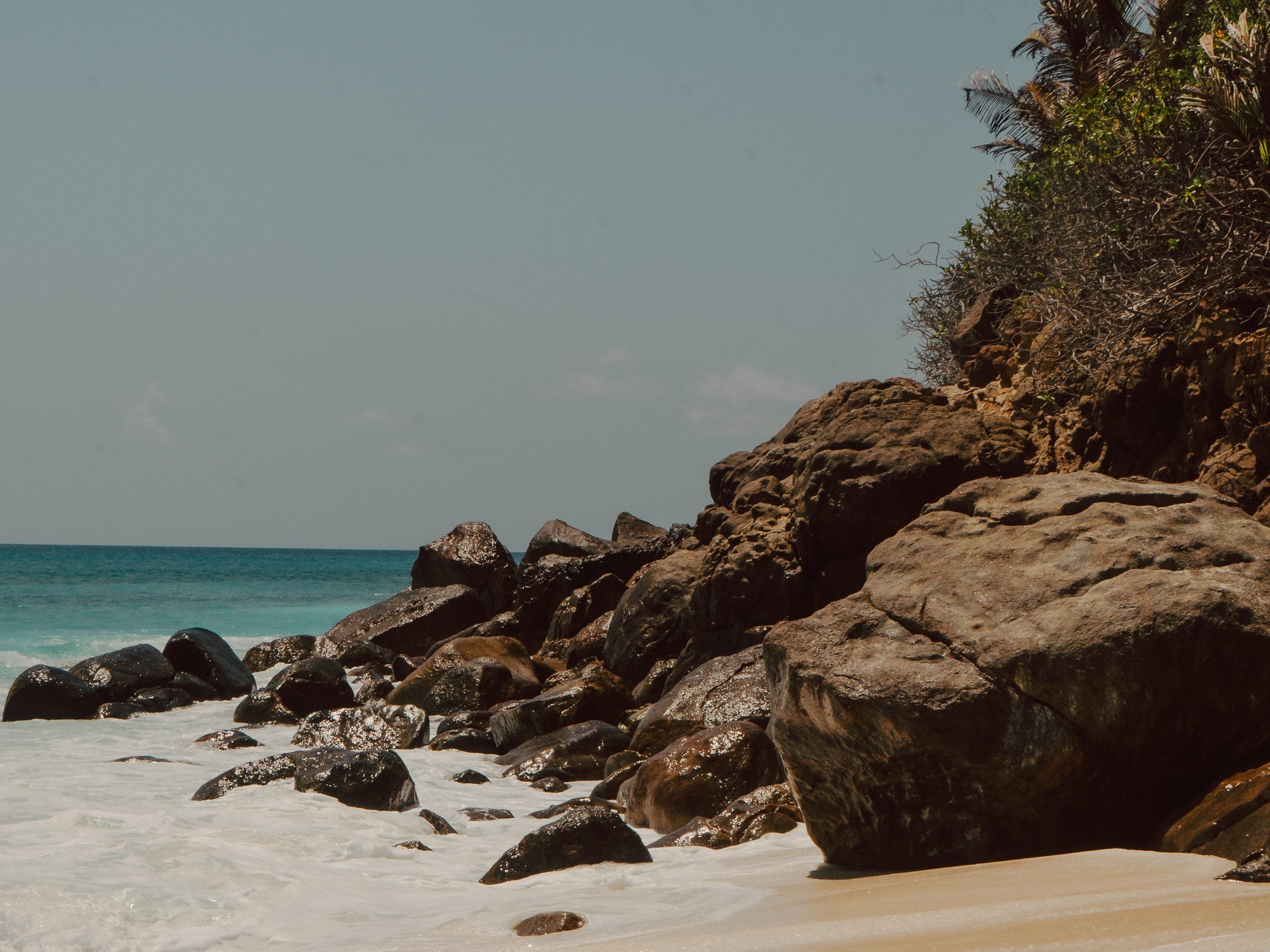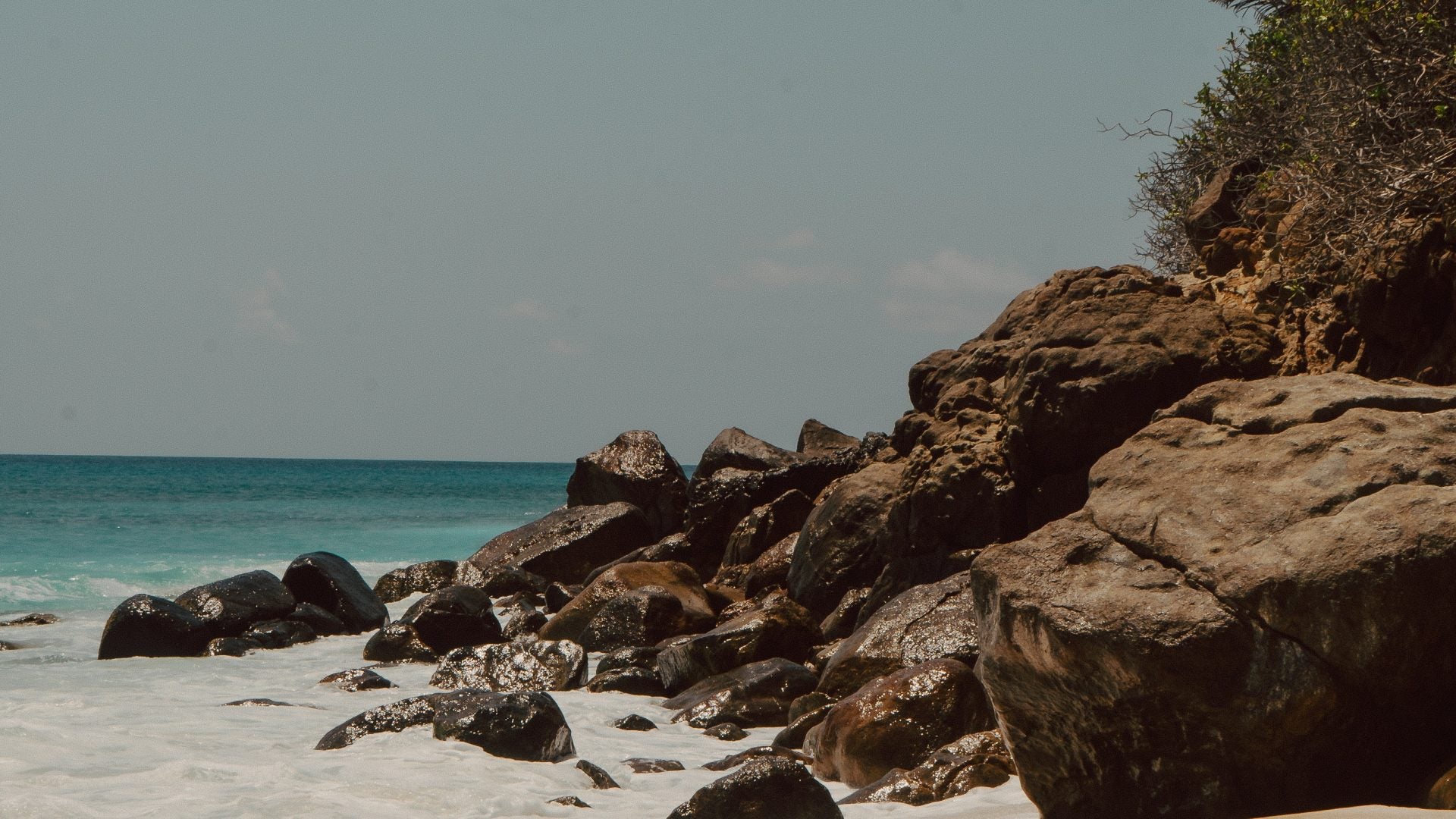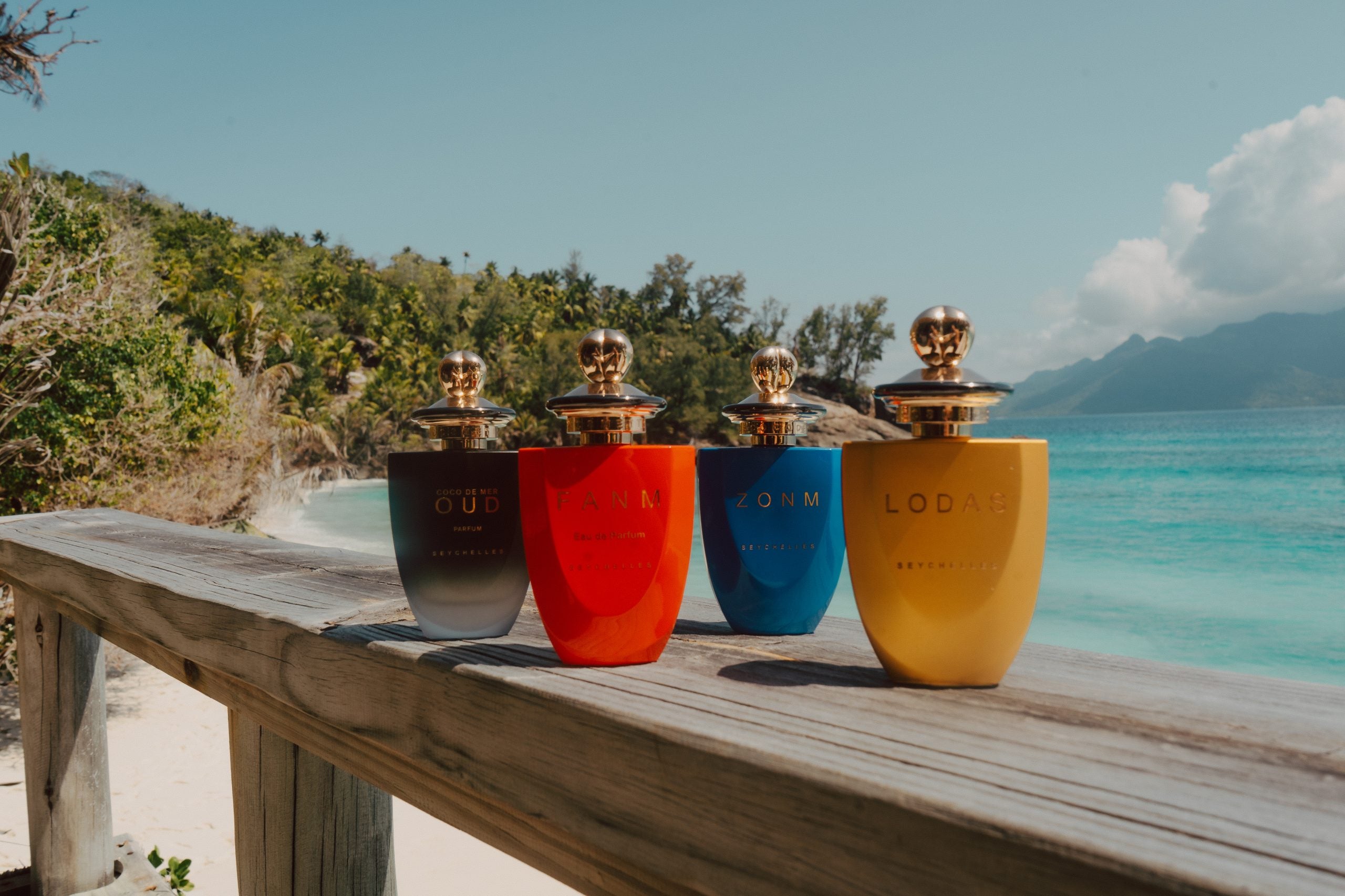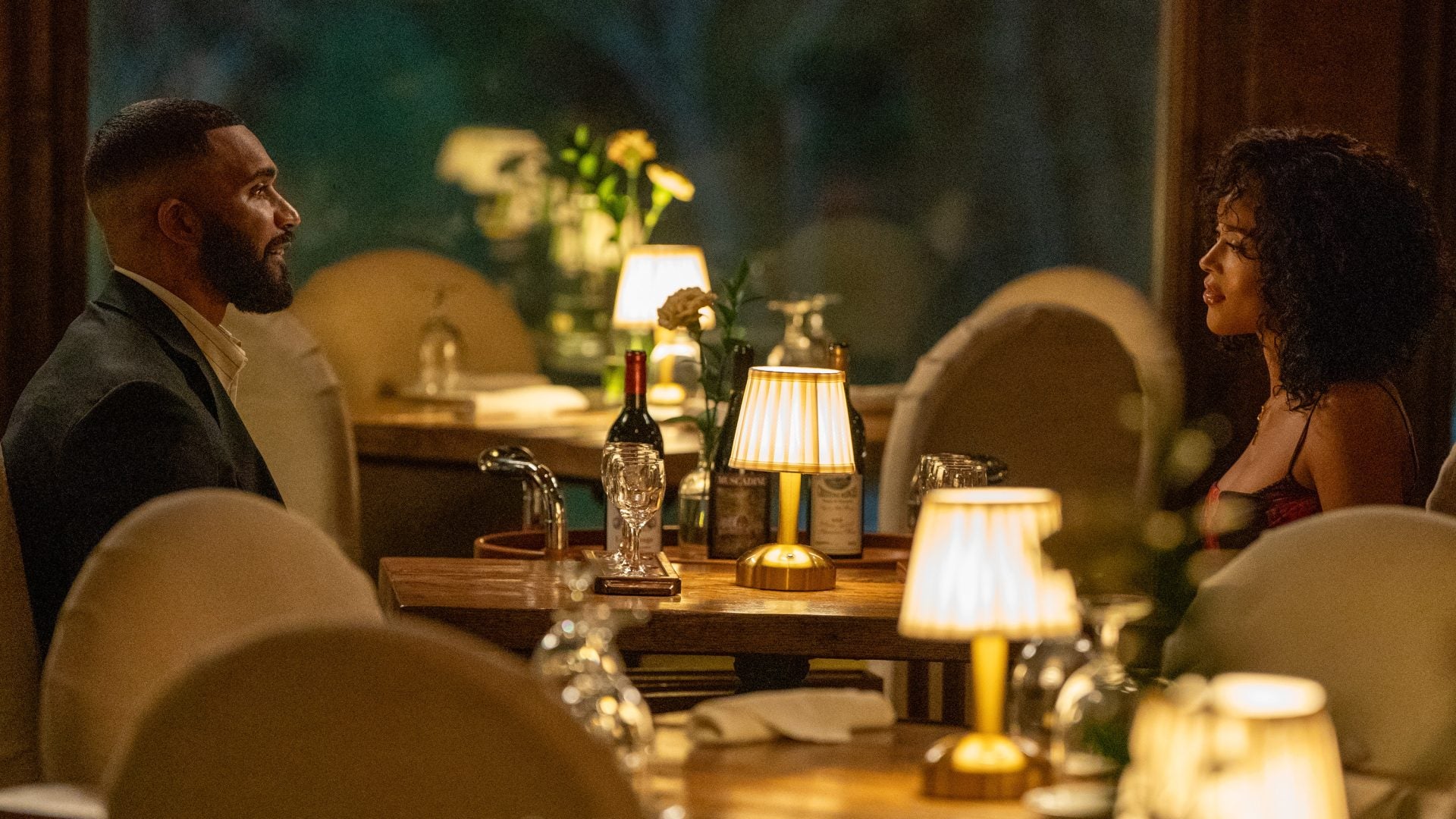From The Homeland To The Motherland: A Beauty Pilgrimage With The Coco de Mer
It’s easy to create preconceived notions about the continent of Africa and what we may assume it to be. But you have to abandon those ideas when you make a […] The post From The Homeland To The Motherland: A Beauty Pilgrimage With The Coco de Mer appeared first on Essence.

 Shot by Christy Yammagucci
Shot by Christy Yammagucci It’s easy to create preconceived notions about the continent of Africa and what we may assume it to be. But you have to abandon those ideas when you make a visit. The next destination Black women who love to travel should add to their list isn’t Zanzibar or the Maldives—it’s Seychelles, the greatest place many don’t know exists.
Floating in the Indian Ocean just east of Kenya, the Seychelles archipelago feels both ancient and futuristic. There are no overwater bungalows here, no party yachts crowding the reefs. Instead, the country has pioneered a Blue Economy—an ocean-first approach that puts conservation before consumption, sustainability before spectacle. You sense immediately that Seychelles is not a place that wants to be seen. It wants to be felt. And for Black women seeking refuge from the constant noise of performance, it might just be the perfect place to disappear and rediscover themselves.
What struck me most was how much the island already felt like home. Not home in the physical sense, but in the ancestral one — that instinctive recognition that lives in the bones. The laughter of Seychellois women reminded me of my aunties back in New Orleans, how their joy >North Island, a private, conservation-focused retreat so lush and removed it feels imaginary. The island has long been a refuge for those who live their lives under constant gaze—The Obamas, the Royal Family, George and Amal Clooney have all escaped here for quiet restoration. Mark Sterner, the general manager, tells me over dinner that the island has had many high profile guests, and you begin to understand why—North Island doesn’t perform serenity; it lives it.
North Island isn’t about excess; it’s about reverence. Each villa feels like it grew out of the landscape itself—granite, palm, and that ever-present ocean breeze. The next evening, we ate beachside and watched turtle hatchlings make their way back into the Indian Ocean. But just before that, I surrender to the island’s rhythm entirely. My massage is set in an open-air pavilion, just above the water. Outside, the tide sighs against the rocks in steady conversation. At some point, the world fades. I doze to the sound of the waves, and when I awaken, the view before me steals the breath I didn’t know I had left: a stretch of turquoise ocean meeting a sky that looks hand-painted. It’s at that moment I realize the difference between relaxation and release. One unwinds the body. The other frees the soul.
Everywhere we went, I kept thinking about how beauty travels — how it migrates and evolves. For centuries, African women have carried the wisdom of the land in their hands, in their rituals, in their scents. Shea butter, hibiscus, frankincense — the things we grew up seeing on our grandmothers’ dressers are all part of a lineage that began on this side of the world. The Coco de Mer may be native to Seychelles, but its story — sacred, sensual, and enduring — feels like it belongs to all of us across the diaspora.
But the heart of this trip isn’t indulgence—it’s education. Everything leads back to the Coco de Mer, the rare double coconut that grows only here, in the Vallée de Mai. The fruit—massive, smooth, and unmistakably shaped like a woman’s hips—has long been an object of desire and mystery. In Seychellois folklore, it was said to hold the feminine spirit of the earth, fertility embodied in botanical form. Its provocative beauty once fueled colonial obsession: explorers risked shipwrecks trying to smuggle it out, and entire economies rose around its trade.
Today, the Coco de Mer is so revered that the government regulates it like a cultural treasure. No one can export or own one without a special permit. Its shape—so intimate, so unapologetically feminine—has become both protected and political. It is a living sculpture, a sensual emblem of nature’s defiance and womanhood’s power.
After our first two days on the gorgeous remote island, we take a boat ride back to the mainland of Mahe, where we stayed at the Hilton Northholme. The family-friendly resort was a sweet beachside escape with incredible sunset views. Though we just spent one day here, the serenity you find in the motherland is unparalleled.
Our next destination was Raffles Seychelles, tucked into the lush hills of Praslin, an island that feels like it was dreamed into existence. If North Island was an ode to solitude and seclusion, Raffles was the exhale — a place where the rhythm of daily life matched the sway of the palms. Here, the mornings began with the scent of frangipani floating through open windows, and breakfast felt like a ritual: tropical fruit glistening like jewels under the sun, warm pastries pulled straight from the oven, and freshly pressed juices that tasted like the color green.
What makes Raffles particularly special isn’t just its postcard-perfect views of the Island or its marble infinity pools that seem to fall into the sea — it’s the attention to the smallest, most human details. A staff member decorated my room for a revitalizing bath. Another slipped a handwritten note of Seychellois proverbs under my door, a gentle reminder of where I was and what I was meant to feel here: rooted, renewed, reminded.
 The Coco de Mer fragrance — part scent, part story — distills the island’s sacred feminine energy into a single bottle. Shot by Christy Yammagucci
The Coco de Mer fragrance — part scent, part story — distills the island’s sacred feminine energy into a single bottle. Shot by Christy Yammagucci We visited Sharon Bonne’s perfume atelier on Mahé, where she distills this mythology into fragrance. Bonne, who sources botanicals sustainably from local forests, is as much archivist as perfumer. “Every note should remind you of where you’ve come from,” she tells me. The scent she creates from the Coco de Mer seed oil is warm, mineral, and slightly sweet—a fragrance that lingers like memory. For her, perfume is not luxury; it’s legacy.
The next day, hiking Cousin Island rehabilitated by Nature Seychelles, I think about how beauty here always comes with responsibility. Nature truly adds to the beauty of the island. So much work has been done to maintain the native wildlife on the island such as it’s birds, tortoises and turtles. Conservationists here often say, “The ocean is our inheritance.” The more I float among the fish and light, the more that feels true for us, too.
By the time we arrived at Mango House Seychelles, our final stop before returning home, the journey had begun to feel like a meditation on beauty itself — not the kind that demands to be seen, but the kind that asks you to slow down long enough to feel. Built along the quiet curve of Mahé’s southern coast, Mango House felt more like a secret than a resort. The property, originally the home of celebrated Italian fashion photographer Gian Paolo Barbieri, still carries the intimacy of a private residence — its walls lined with black-and-white portraits, its air scented faintly with sea salt and frangipani.
After days spent exploring coral reefs and rainforests, Mango House offered a gentler kind of immersion — into stillness. I spent the last morning here drifting between the infinity pool, the ocean just a few steps away, where the water dotted the horizon. At Muse Restaurant, I had one of the most memorable meals of the trip: freshly caught sushi. There was no rush, no itinerary, only the rhythmic hush of waves and the
As we packed to leave, I realized that the Seychelles — this constellation of islands many don’t even realize exists — had given us something profound: space to breathe, space to remember. For Black women seeking somewhere to truly unplug, to rediscover themselves in the mirror of the natural world, Seychelles is not just a destination — it’s a sanctuary.
Leaving Seychelles felt like leaving a part of myself I hadn’t realized I was missing. On the flight home, I scrolled through photos of palms and ocean, but what lingered most wasn’t what I saw — it was what I carried back: a kind of knowing. The same knowing that my ancestors must have held, that beauty and resilience are not separate things. They coexist — in our skin, our scent, our ability to make anywhere we stand feel sacred.
Back home, when I wear the Coco de Mer fragrance, I can still smell the beach in Vallée de Mai, the spice of dinner at The Piazza, the sand between my toes. For me—and for any Black woman who’s ever needed to unplug from a world that asks too much—it’s more than perfume. It’s a reclamation. A way of remembering that before there were borders, there was connection. That we come from abundance — from seed and soil and sea — and that every time we return, whether in body or in scent, we are closing the distance between the Homeland and the Motherland..
Seychelles isn’t paradise because it’s remote or untouched. It’s paradise because it teaches us that beauty, when protected and honored, is a form of freedom.
The post From The Homeland To The Motherland: A Beauty Pilgrimage With The Coco de Mer appeared first on Essence.
























